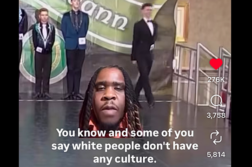3CR Community Radio in Melbourne knows first-hand about scandals involving police, secret surveillance and the media. But unlike the News of the World phone hacking affair, in our scandal we were spied on.
As The Age revealed in October 1997, 3CR was infiltrated by the Victorian police over four years along with numerous other community organisations engaged in civil and political campaigning. Victorian police agents presented and produced radio programs — in particular Tuesday Breakfast during 1989 and 1990 — gathering "intelligence" on community groups involved at the station.
It’s fair to say that the experience left us with a greater understanding of the need for a diverse and independent media in a democracy.
While some are looking to stick the boot in while Rupert Murdoch is down — and who could blame them? — why don’t we instead take the opportunity to make some real change to the media industry here in Australia. Change that will buffer us from scandals such as the one engulfing the Murdoch media empire, and improve the quality and accountability of journalism nationwide.
Australian democracy needs a fit and proper media — and we certainly don’t have one right now.
Australia has the most concentrated media ownership in the Western world. We have just three major newspaper owners, with Murdoch owning 70 per cent of the market. This type of monopoly must be dismantled. Politicians can and should legislate to make this change, taking into account issues of foreign and cross-media ownership.
Democracy requires diversity and the free flow of opinions and information. We do not get that with the conservative, homogenous agenda-setting that goes on in the nation’s dailies. Even in this new media environment, the dailies continue to set the stage for the day’s reporting — indeed, the day’s thinking. And we are much the worse off for it. How is it that we’re still obsessing over "boat people" when so few arrive that way, and debating climate change when clearly the science is in? Because the mainstream media tell us to.
This monopolised media environment has left us with a media lacking in core journalistic principles. Consider the state of Australian journalism in terms of fairness and accuracy, ethical reporting, the clear separation of editorial and commercial interests, holding politicians and corporations to account. And what happened to journalism for the public good? Call me old-fashioned, but that’s what I think the media is actually for. To create greater tolerance and understanding, and to encourage informed participation in the country’s social and political affairs.
The Australian community broadcasting sector — which is the largest media sector in the country with nearly 530 services and more than 23,000 volunteers nationwide — may well be our saving grace. The sector was set up in the 1970s to provide a voice to those not represented in the mainstream media. The diversity of voices, issues and opinions represented on radio and television stations in every state and territory reach an audience of 9.5 million Australians each month.
For 3CR this involves over 120 programs in 20 different languages engaging the efforts of nearly 400 volunteers. A diversity of opinions and issues is prioritised, encouraging alternative realities than those pumped out by the mainstream media. Communicating local information, giving voice to marginalised communities and issues, encouraging participation and access.
It makes sense for the Australian community broadcasting to receive public funds from the Federal Government, yet in 2009/2010 the entire community broadcasting sector received just over $14 million dollars in funding — compared to the ABC’s $912 million (and News Corporation’s $2.74 billion profit!).
Earlier this year the sector received an additional $12.5 million over four years in federal funding, its first real increase in decades. Needless to say, the level of funding still does not reflect the growth of the sector and its significant contribution to the Australian media landscape.
Now of course I’m not suggesting that community broadcasting step in and take over the role of the mainstream media — on the contrary, we have a clear role to provide access to those under-represented in the mainstream. But through increased funding to community broadcasting the federal government is supporting a more diverse media sector as well as a vital space for local communities to participate and for emerging journalists to gain skills and training.
The opportunities to make real change to our media structures are clear: legislate to diversify media ownership, reinvigorate journalism’s commitment to ethics and distribute more public funds to the community broadcasting sector. So before we have our own News of the World scandal let’s make some democratic changes for a fit and proper Australian media.
Like this article? Register as a New Matilda user here. It’s free! We’ll send you a bi-weekly email keeping you up to date with new stories on the site. And you can like New Matilda on Facebook here.
Want more independent media? New Matilda stays online thanks to reader donations. To become a financial supporter, click here.
Donate To New Matilda
New Matilda is a small, independent media outlet. We survive through reader contributions, and never losing a lawsuit. If you got something from this article, giving something back helps us to continue speaking truth to power. Every little bit counts.



